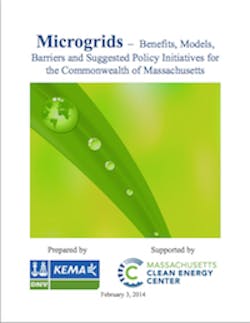The study team, DNV KEMA and Peregrine Energy Group, initiated a thorough literature review on microgrid deployment and known challenges and organized four focus groups comprising microgrid developers, microgrid owners, industry experts, distribution company representatives, combined heat and power (CHP) system operators, fuel cell system installers, and state and local officials. Attendance at the groups exceeded 40 participants. The team also conducted interviews with distribution companies: Until, NSTAR and National Grid specific to the topic of microgrids. The objective of each interview was to capture data, concerns, positions and supporting arguments regarding the use of electric and thermal / electric microgrids to achieve the Commonwealth’s clean energy and greenhouse gas (GHG) goals. GHG goals, public safety, and emergency preparedness were used as organizing themes to frame discussions with the distribution companies and focus groups in win-win terms for Massachusetts microgrids.
The report also considers the Department of Public Utilities Grid Modernization Working Group’s proceedings on regulatory frameworks for a smarter grid, grid integration of distributed energy resources, and examines how other states and countries are currently handling the issue of microgrids. The report’s recommendations are consistent with the history of market transformation in the Massachusetts’ energy industry, which has been guided by clear statutes, stakeholder input, and incentives to bring cleaner energy to consumers.
